We tested out our four-year-old water, and our two-year-old emergency food bars. Here’s what we found.
Like many others who try to be prepared for a crisis, we have a variety of emergency food and water options. Our goal is to help ensure that we have access to food and water no matter where we are or what happens. We describe in the Panoplia.org Soft Skills and Tactics (SST) online course some of what we’ve set aside in our home. This can be found in SST topic 01.02.05. We show there some of the more long-term options that are included in our Loadout Level 04 (Residence Survival).
In topic 01.02.04 we describe how we address emergency food and water for Loadout Level 3B (Vehicle Survival). The issue with keeping food in vehicles is that things tend to spoil quickly. Temperatures within a parked a car or truck can reach as high as 125 degrees Fahrenheit in the summer, and near freezing in the winter. There are not many food and water options that will stand up to such abuse.
Our Loadout Level 3B (LL-3B) includes water filtration options. It also has some freeze-dried food options to which one need only add boiling water. And yet, we think it’s important to augment these with food and water that can be accessed and consumed immediately. There’s not always time during an emergency or crisis to find a water source to filter, or to pull over and set up a camp stove.
With this in mind, we chose to include the SOS bars and Blue Can Water shown in the image above within our LL-3B.
Blue Can Water
Back in June 2017 we ordered a case of Blue Can Water. These are rated to last for 50 years. They’re said to be able to withstand temperatures as high as 145 degrees, and as low as almost freezing. We obviously can’t know at this point if this product will stand up to its 50-year shelf life promise, yet we wondered what a can that we purchased over four years ago would taste like now. These have been subject to a variety of temperatures, all within the range recommended by the manufacturer.
With just a bit of hesitation, I popped open a can and took a long sip. I was pleasantly surprised to find that the water inside tasted exactly like the water I drink out of our reverse osmosis filtration system every day. It was really good. I then passed the can to my wife and asked her to try it out. She has a more discriminating palate than mine, and simply said, “This tastes good.” So far, so good. We’ll continue to keep the Blue Can Water stashed in our vehicles. Here’s hoping we’ll find them just as fresh in another four years.
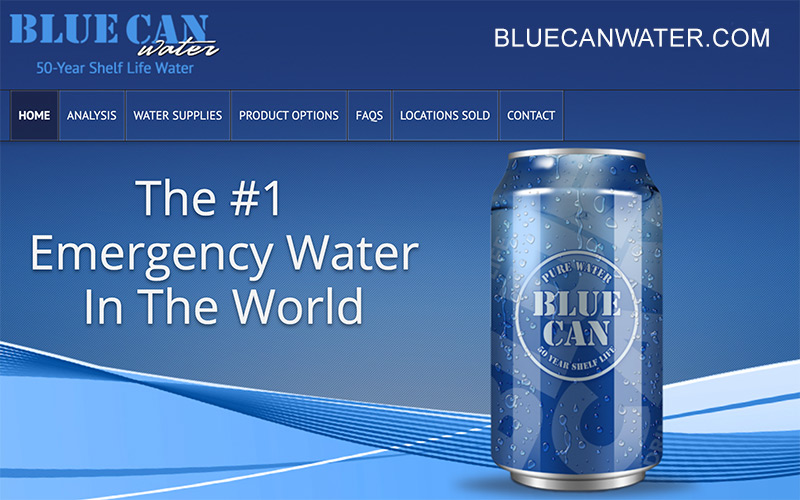
Just like almost everything else that can help one in a survival situation, Blue Can Water can be hard to find these days at a decent price. I looked around online a week or so ago, and found very high shipping prices. I looked today, and Amazon has a case of 24 cans for $49.99 and free shipping. That works out to $2.08 a can. By comparison, we paid $1.83 per can back in May 2017. Yes, this is expensive water, and yet if it actually lasts even half the 50-year promise it’s well worth it to me.
SOS Emergency Bars
In May 2019 we ordered a case of Emergency Food Bars from SOS Survival Products out of Doral, Florida. The case is pictured below:
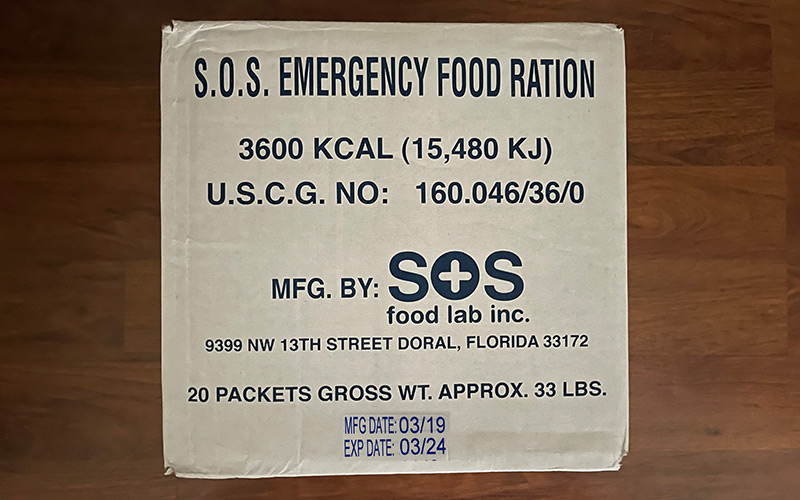
The reason I wanted to test these is that the manufacturer claims that they will last five years even if stored in extreme temperatures. They’re rated to withstand cold down to -22 degrees Fahrenheit, and as high as 149. It’s my understanding that they were originally intended for use in ocean-going vessels. This being the case, I thought they would also work as an option in the extreme temperatures of a car or truck.
We opened a few bars after receiving them back in May 2019. Overall, they were not bad. They would be quite pleasant during a survival situation. The manufacturer notes that they are intended to taste like a coconut cookie. I’d say that’s about right.
The image below shows the nutritional facts and the ingredients. Each shrink-wrapped packet contains nine bars. The packets each weigh 1 pound, 12 ounces, or 795 grams. The case holds 20 packets, for a total of 180 bars. In 2019 we paid $120 for the case, including shipping. They sell for about the same amount today when they’re available on Amazon.
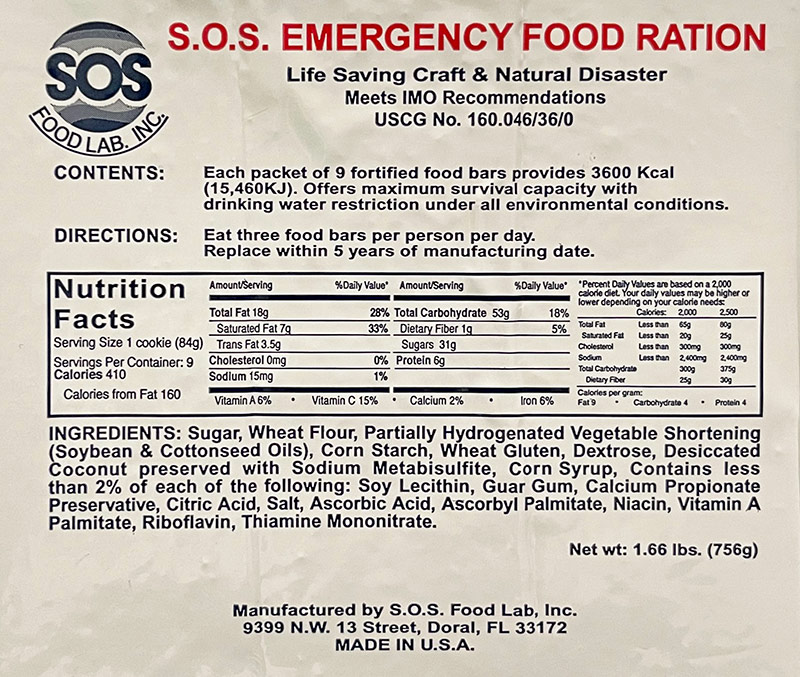
Some of the ingredients are not as natural as some would like, yet you have to recall that these are not intended to be consumed on a daily basis for years. Instead, they’re meant to offer calories during an emergency or crisis when you have no other option but starvation.
As noted above, these are rated to last five years. It’s been over two years since we purchased these, and so we cracked a package open to see what they would taste like today.
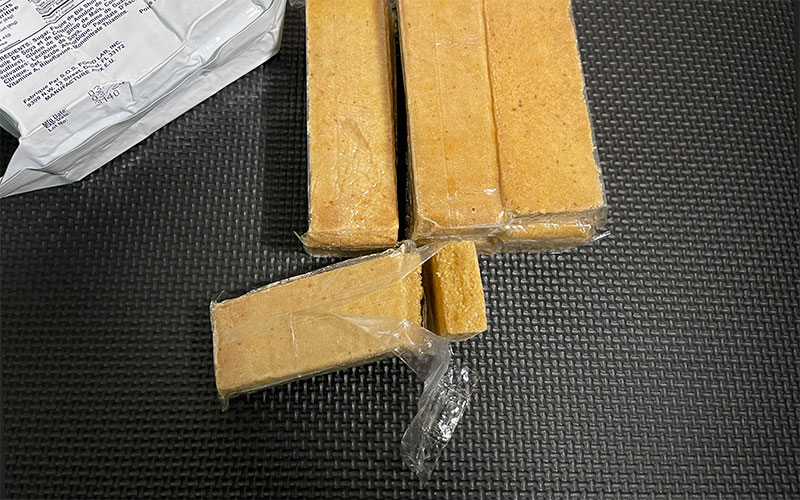
To the best of my recollection, the bars tasted about the same now as they did two years ago. They may be just slightly drier around the very edges, yet they tasted good and would be a welcome sight when nothing else is available.
Although we don’t plan to be around in 2067 when our Blue Can Water is set to expire, we’ll plan to let you know in a few more years how the water and emergency bars taste then. In the meantime, you may want to consider purchasing a few cans and bars to have available in your vehicle during an emergency or a time of crisis.
As always, remember that Panoplia.org has no affiliate relationships with manufacturers or retail suppliers, nor do we participate in third-party advertising. We simply share our views about gear and supplies that work well for us under hard use.

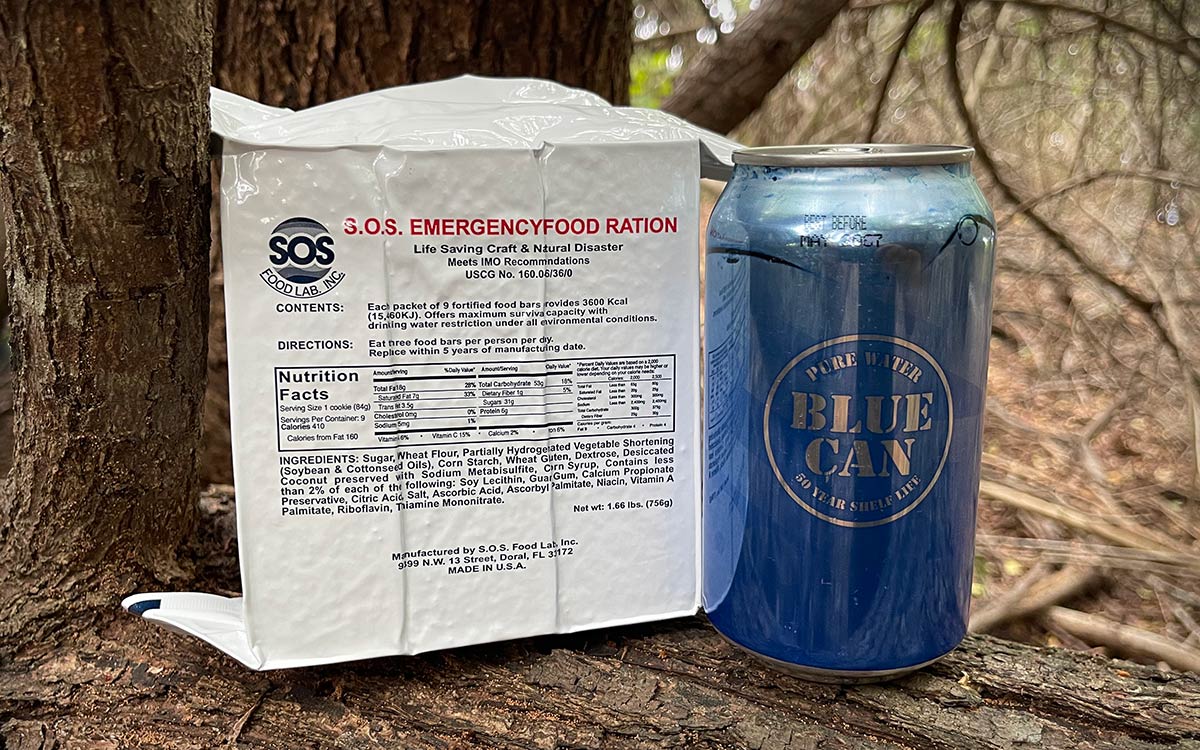


0 Comments